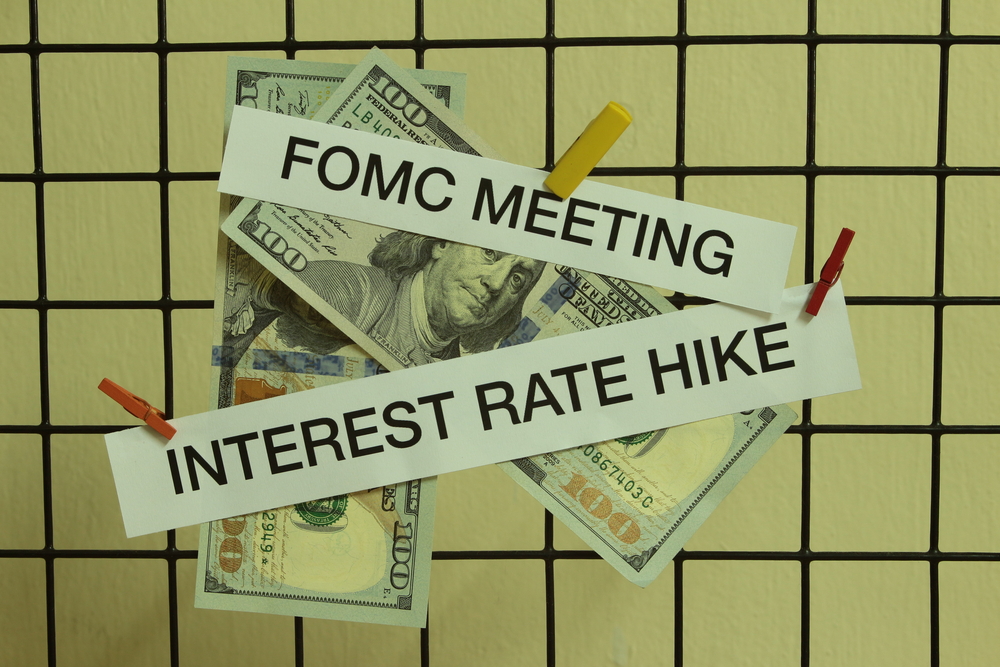We’re at an important inflection point.
That is, the Federal Reserve’s interest rate setting committee (technically the Federal Open Market Committee) will announce the latest change to its benchmark interest rate today at around 2 p.m. ET.
We’re expecting to see another quarter-point hike. But more importantly, we’re expecting this to be the last Fed interest rate move of this cycle.
And that’s massive for the economy and the stock market.
Because that will mean inflation has come down enough that the Fed doesn’t have to contain it by hiking rates further and pushing the economy into a recession. It will also mean that the stock market could be off to the races and potentially continue this young bull market for the rest of the year or longer (barring some unforeseen development, like a war).
Best of all, it will indicate that the Fed has achieved the holy grail of central banking: a “soft landing,” which involves taming runaway inflation without a spike in unemployment.

But there’s a catch. (Isn’t there always?)
It’s called “long and variable lags.”
That may sound like gobbledygook, but it’s not. It’s a famous phrase coined by Nobel Prize-winning economist Milton Friedman. And it means that it can take time for changes in interest rates to affect the macroeconomy (the lag is long) and that time can differ unpredictably across episodes (the lag is variable).
So we don’t really know when the 10 rate hikes the Fed implemented from March 2022 to today (with one more coming this week) will hit the economy. Even if the Fed is on pause as of this afternoon, those rate hikes are still in the pipeline and may yet deliver a gut punch to the economy.
Each economic expansion and contraction is unique, of course, so nobody knows how long it will take for monetary policy to impact any one of them. But it’s generally agreed that the biggest impact of a rate hiking cycle probably shows up between six and 24 months after the cycle ends.
When the Tide Goes Out
2006 was a good example of a long lag. The Fed raised rates by 4.25 percentage points between June 2004 and June 2006. And those hikes caused a recession to start in December 2007, a year and a half after the Fed stopped hiking.
Critics of this theory will contend that the 2007-2009 recession (the Great Recession) was due to the housing crisis that was triggered by lenders extending loans to unqualified borrowers, a housing bubble, and excessive borrowing by consumers and companies.
But that’s just the sort of crisis that a hiking cycle can create. Recall the mini banking crisis earlier this year, when several regional banks failed because they were unprepared for higher interest rates.
Berkshire Hathaway Chairman Warren Buffett famously said that “you only find out who is swimming naked when the tide goes out.” He meant, of course, that no one can really know or appreciate the risks that companies or individuals are taking until they are tested by adverse conditions… like higher interest rates.
Maybe Worry, Be Happy
The question is this: What industry or economic sector right now is overly dependent on excess liquidity and ultra-low interest rates? And will it collapse in the next 12 months and drag the economy down with it?
It’s difficult to know. The Fed, of course, is supposed to be monitoring industries for just such a risk. But it completely missed the fact that Silicon Valley Bank, Signature Bank and First Republic Bank had massive interest rate risk and were unprepared for the impact of higher rates.
All that said, keep in mind that the market can continue to rise between the last interest rate hike in a cycle and the onset of any resulting recession. From July 2006 to September 2007 – just before the Great Recession began – the S&P 500 gained about 20%.
So if the inflection point is this week, when the Fed decisively moves from an aggressive hiking stance to a pause, be happy.
But maybe still worry a bit.
